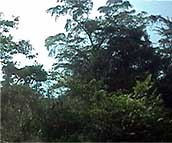|
Other Places |
|||||||||||||||||
|
|
|||||||||||||||||
|
Other Sections |
|||||||||||||||||
|
|
|||||||||||||||||
|
The eastern province, Ciego de Ávila, has the smallest population of all Cuba's provinces. The western province, that of Camagüey, is also sparsely populated; both are primarily of agricultural importance. As is typical in Cuba, the capital cities of Ciego de Ávila and Camagüey bear the same names as their provinces.
In terms of economic importance, the province produces a fair amount of citrus and sugarcane; in fact, it is the island's leading supplier of pineapple. Given the small, rural population of Ciego de Ávila province, there are no great centers of culture and entertainment. Likewise, the province does not benefit much from tourism, nor will it in the near future. Similar to Ciego de Ávila, the province of Camagüey is sparsely populated, heavily agricultural, and geographically dominated by vast expanses of flat grasslands. Predictably, the city of Camagüey (capital of its namesake province) is not especially large. Camagüey generates more tourist revenue than Ciego de Ávila, however. This is mainly due to its pristine beaches and cays along the both coasts, which are less swampy than those in Ciego de Ávila.
|
|||
 Together, the provinces of Ciego de Ávila and Camagüey constitute the bulk of Cuba's central savannahs. The area's terrain resembles the vast plains found in the western United States. Minor mountain ranges separate the central savannahs from the swampy coastal plains running along both coasts.
Together, the provinces of Ciego de Ávila and Camagüey constitute the bulk of Cuba's central savannahs. The area's terrain resembles the vast plains found in the western United States. Minor mountain ranges separate the central savannahs from the swampy coastal plains running along both coasts. Ciego de Ávila is Cuba's least populous province. Without any major cities (the capital city, and largest in the province, only has 80,000 people), most of the population resides in small towns and villages. Almost all of the province's jobs are agricultural in nature.
Ciego de Ávila is Cuba's least populous province. Without any major cities (the capital city, and largest in the province, only has 80,000 people), most of the population resides in small towns and villages. Almost all of the province's jobs are agricultural in nature.